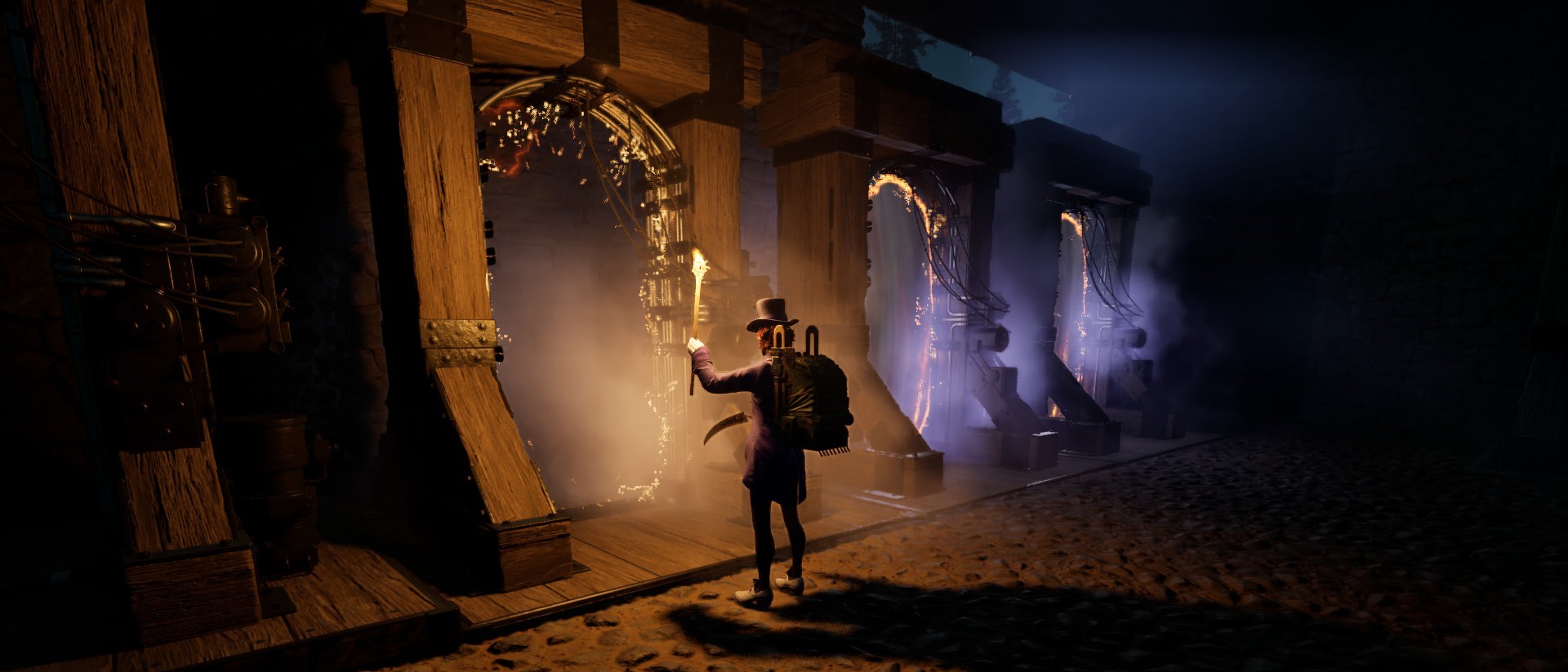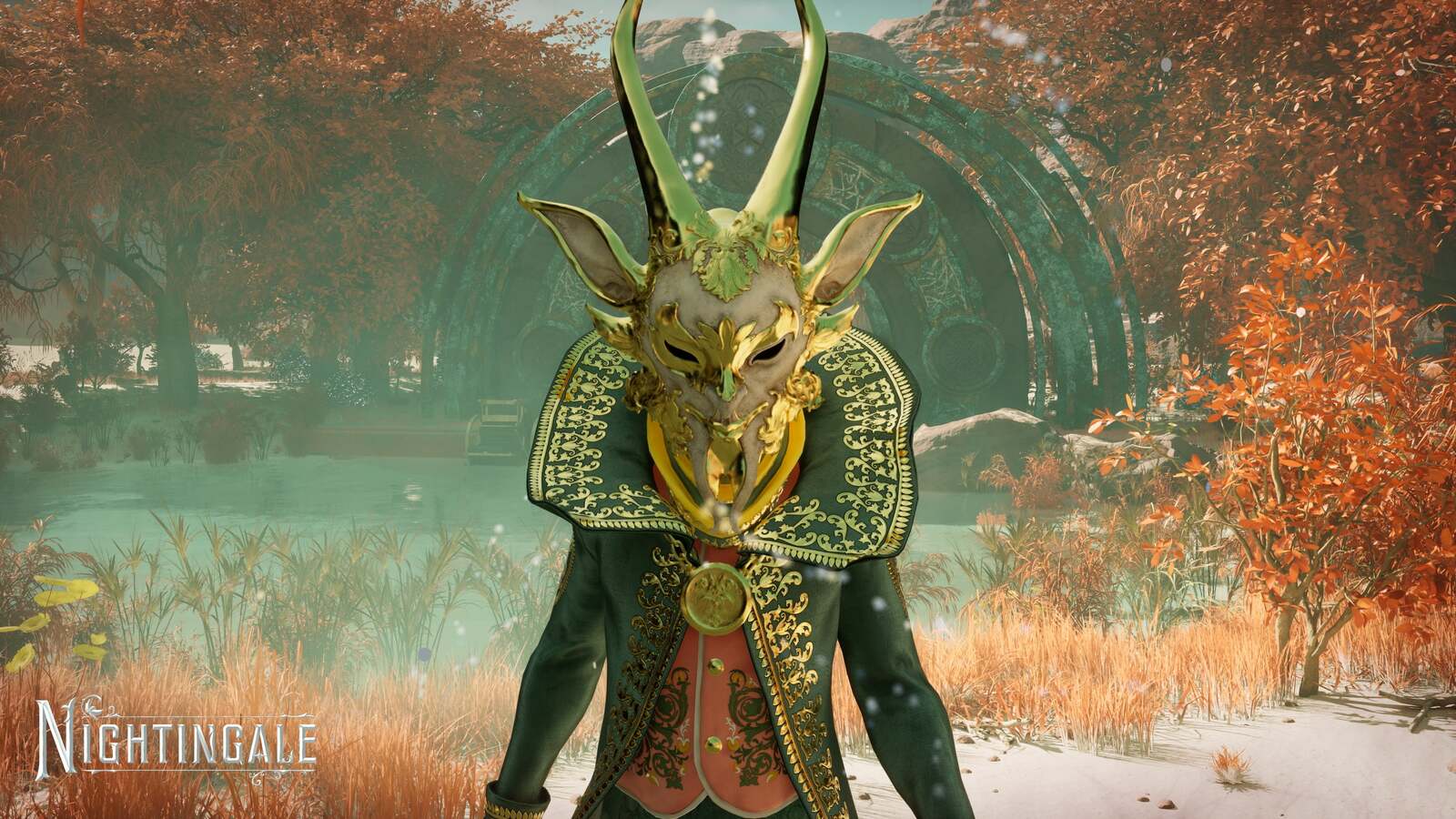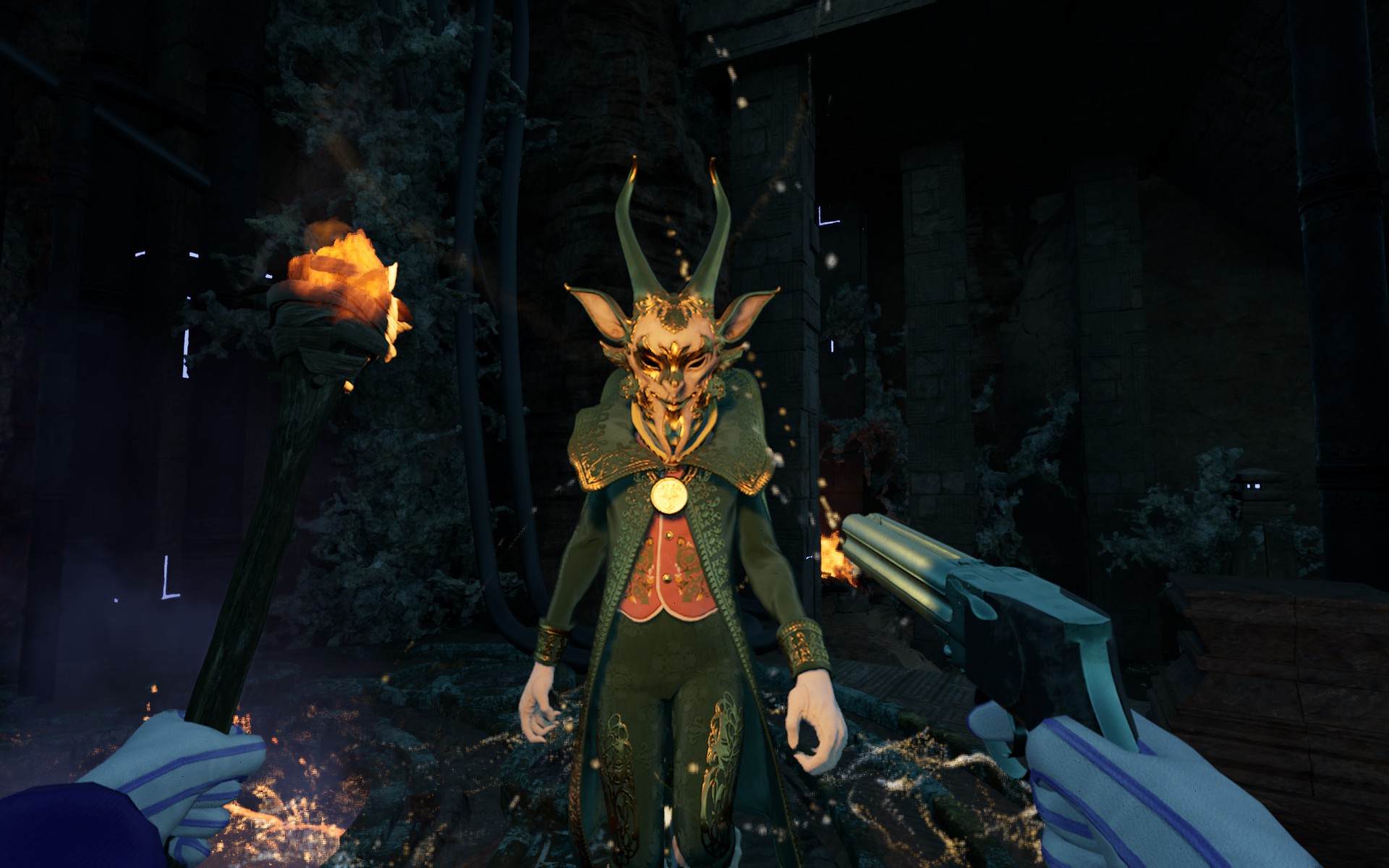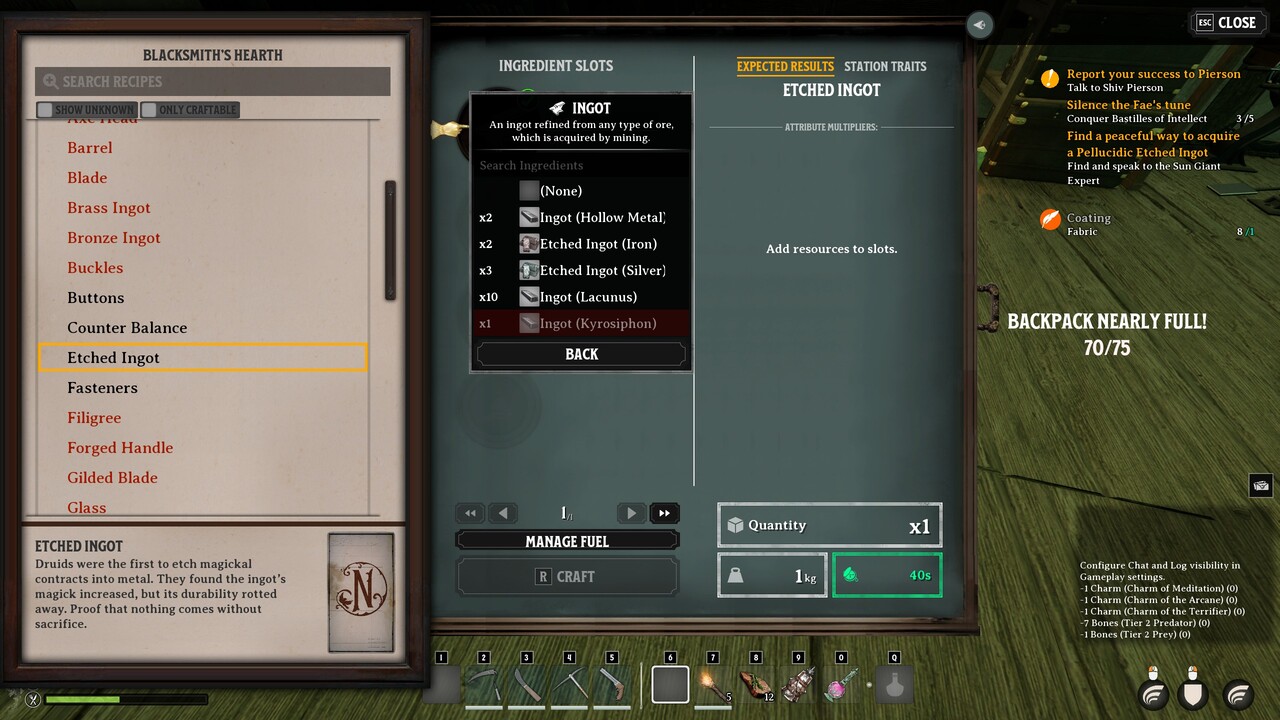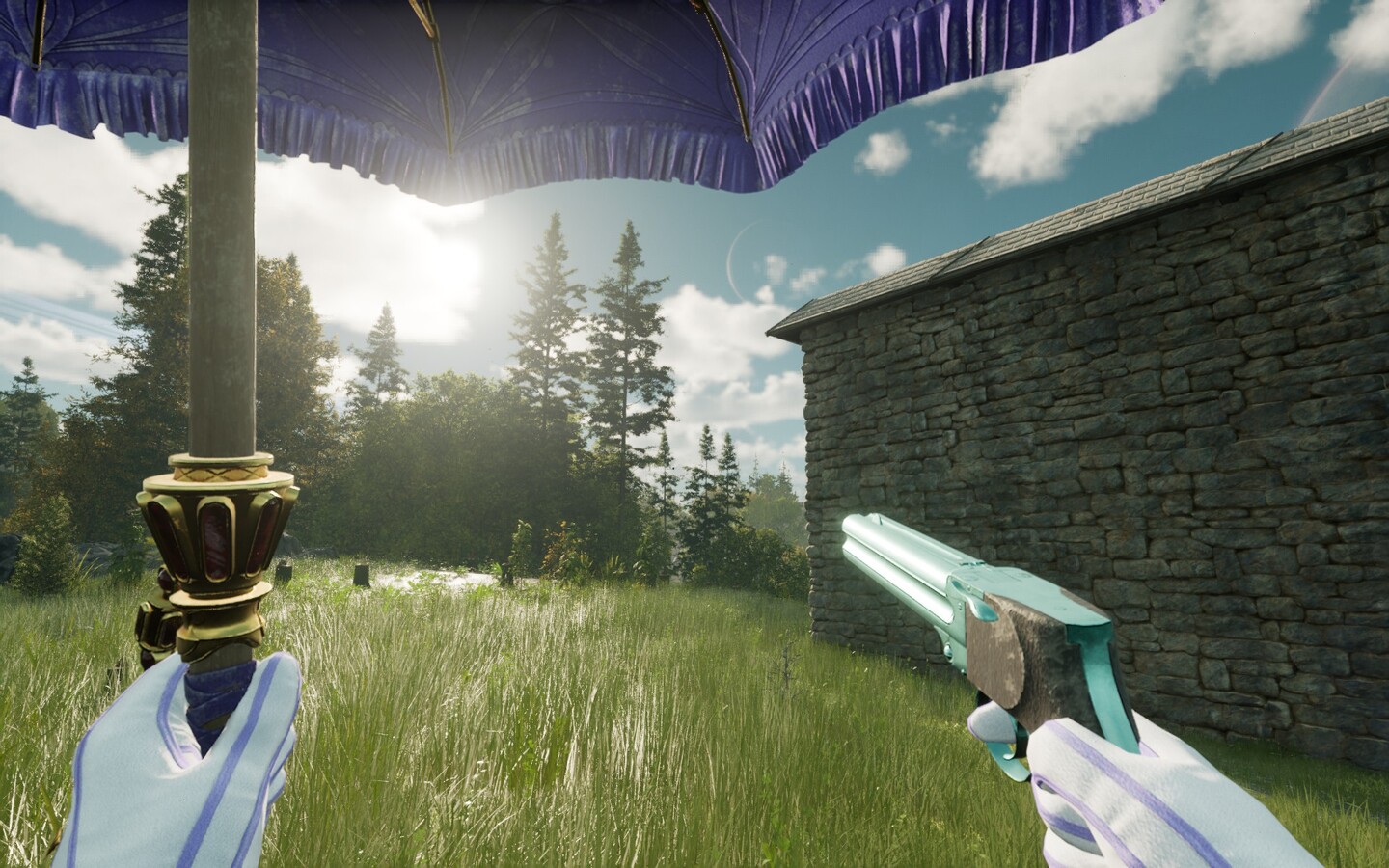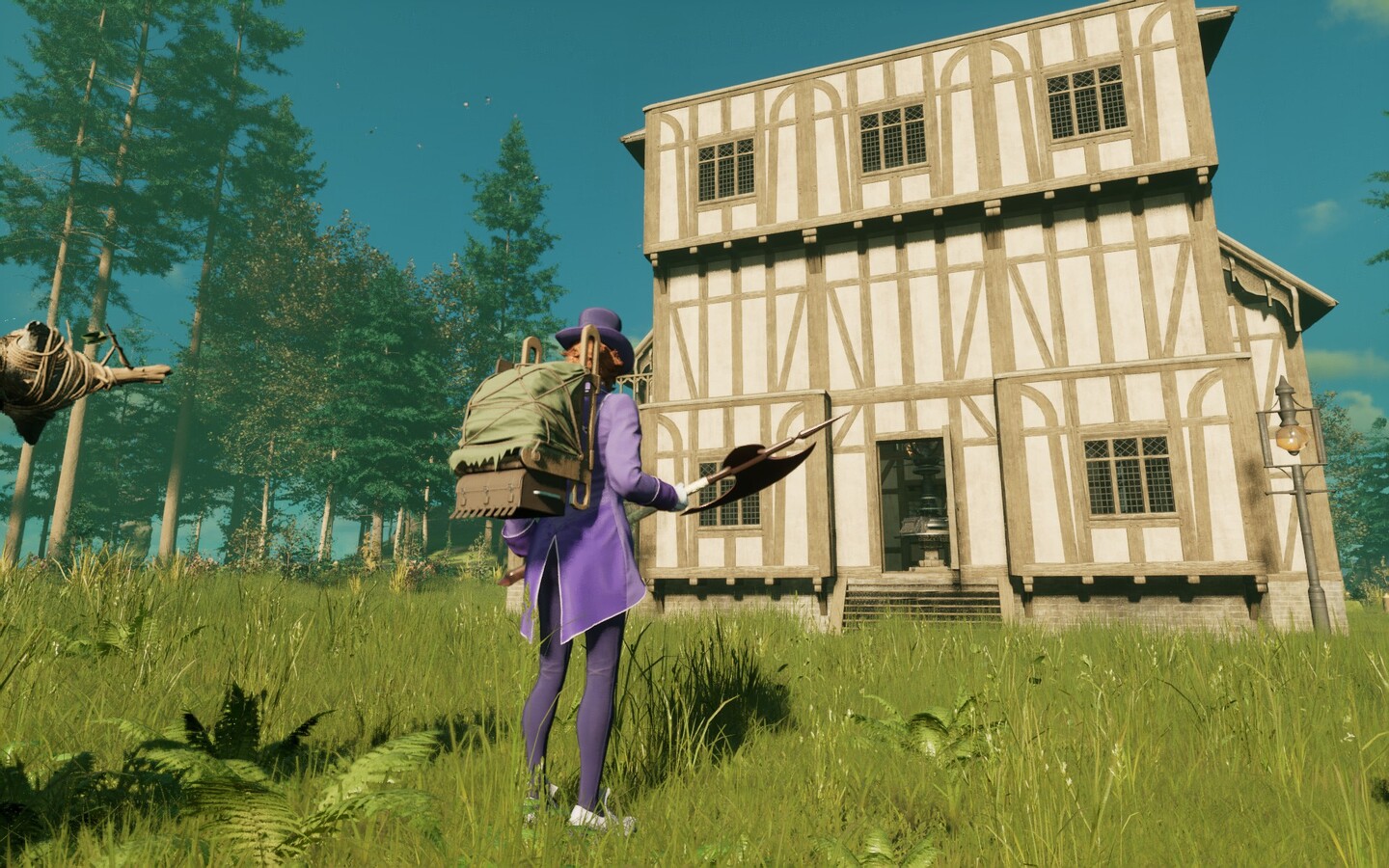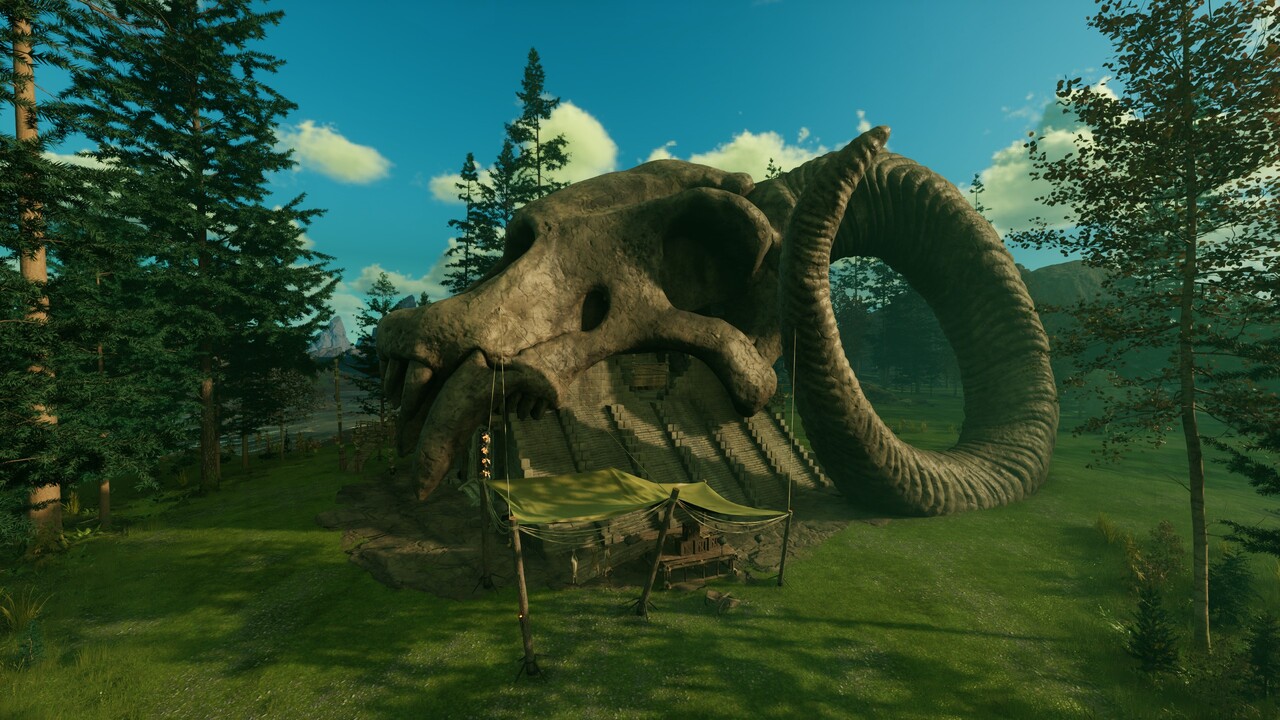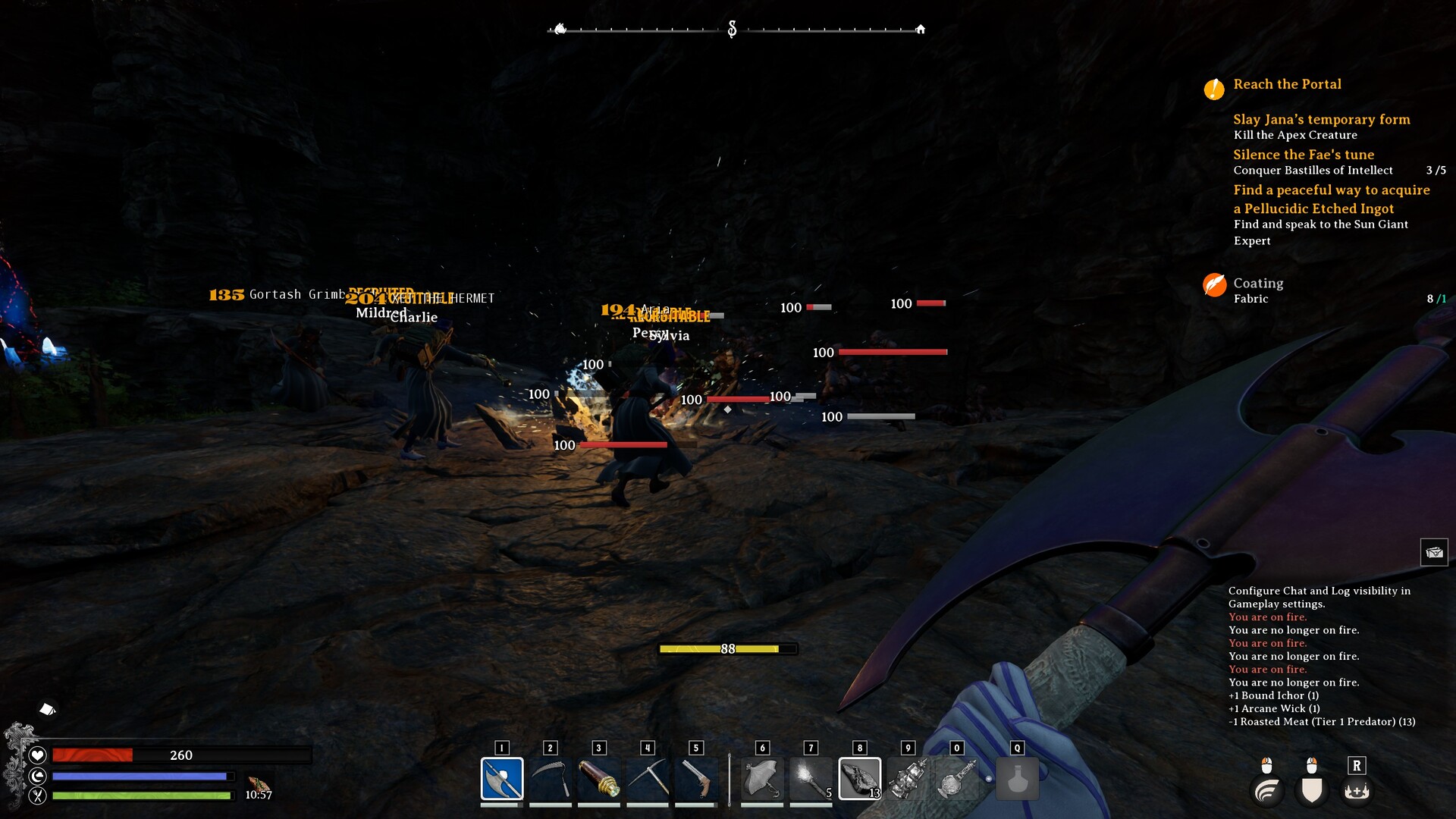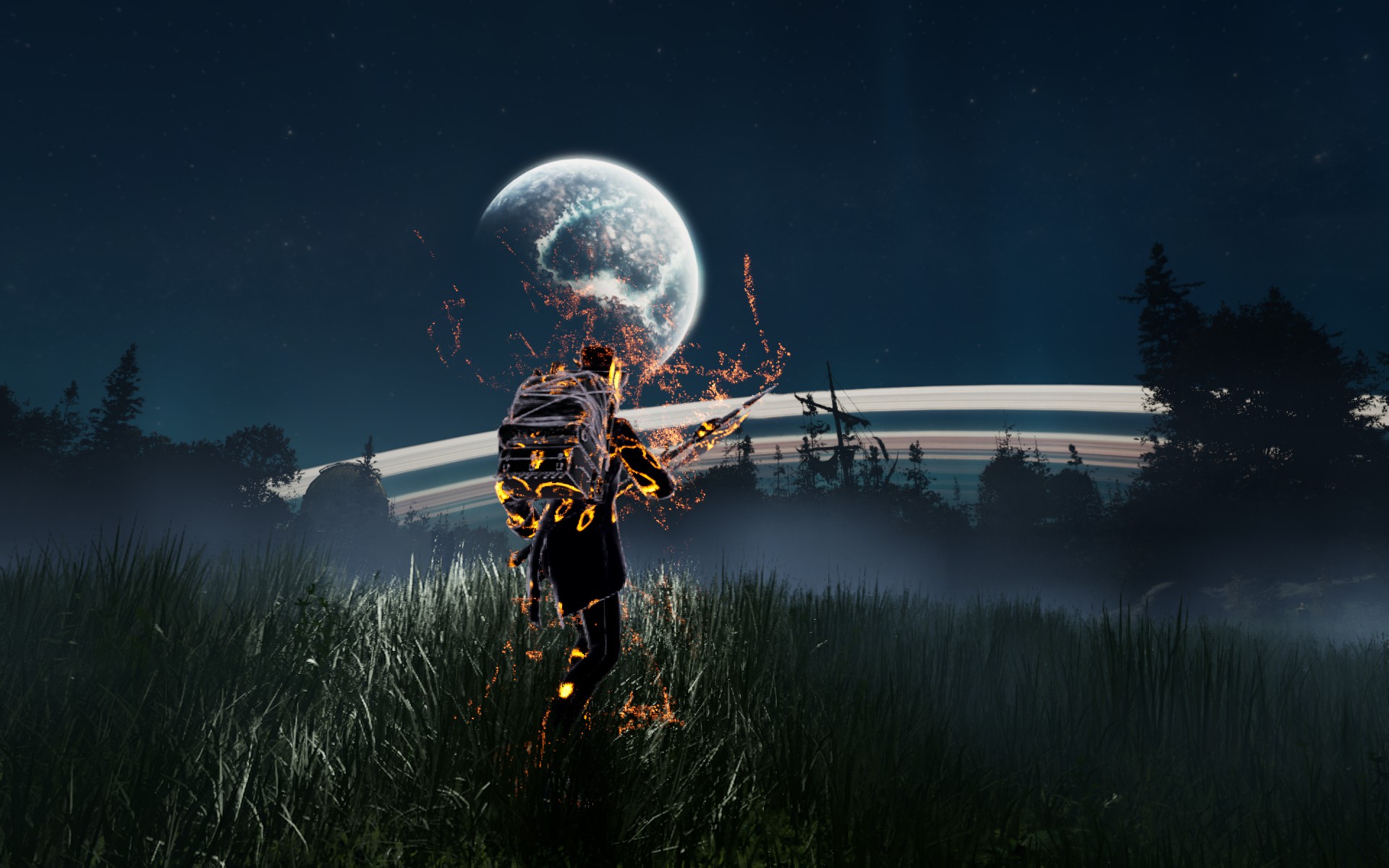Early Verdict
Nightingale is a game I wanted to love. It's a game I kept telling myself and others about whenever more information came out about it. I was excited, enthralled, and mystified by the idea of it. It pains me to say my experience left a sour taste in my mouth. It's as though everything is half-baked at this point. With that said, it's early access, and what the developers have lined up could be a fascinating game once finished.
Pros
- +
A wonderful story not found in many survival games
- +
A complex crafting system that will keep users busy indefinitely
- +
Realm cards that create unique gameplay scenarios
Cons
- -
Technical issues that'll annoy the most patient people at times
- -
A middling end game that doesn't give players a reason to continue playing
- -
Always online mechanics that don't make any sense until the very end, when many players may have already quit
Why you can trust Windows Central
I love survival games. It's my bread-and-butter genre. My most-played game ever on Steam is Conan Exiles.
With over 500 hours, I played that on and off throughout the years, sprinkling in the likes of Ark, Rust, DayZ, 7 Days to Die, Dead Matter, Enshrouded, Palworld, and more. You get the picture, I love these games.
So, of course, Nightingale has been on my radar for some time. So long, in fact, that I was heartbroken when it was initially pushed back from its 2023 release date to February 20th, 2024. I needed it! Which makes this review all the harder to write for me.
The Good
Story and Setting
Right off the bat, you're treated to something that feels like former Bioware developers made it. It's a fantastical setting that invokes a true sense of wonder upon the player's entrance. I never knew how much I wanted steampunk vibes to invade my survival game setting. Nightingale delivers on its setting, as well as its story.
Once you've entered the world, you're greeted by Puck, a Fae of omnipotence that reminds me of Q from Star Trek. Popping into reality at his leisure, Puck delivers items and tidbits of knowledge to the player along their journey. Setting the player up for success, or possibly failure, who knows?
As for your voyage, the player is trying to return to Earth and the fabled metropolis of Nightingale. As explained during the game's introduction, a devastating mishap has cut off all persons and Realmwalkers from Earth. Caught at an incomprehensible interdimensional distance from their true home, the player will weave their way through numerous realities in an attempt to return to their home.
Along the way, you'll meet characters inspired by other stories, much like Puck from Midnight Summer's Dream. These characters will provide the players with quests filled with lore and explanations that players can choose to search for or entirely skip based on their chosen dialogue. It's a fantastic change of pace from your everyday typical survival game story.
All the latest news, reviews, and guides for Windows and Xbox diehards.
If you enjoyed something like Grounded, you'll appreciate this as well. I mean it. The story is well laid out, and compared to other survival games, it is wild. Without giving away too much, I'll leave it on the note that the game is set up for more of the story to unfold during Early Access and possibly beyond through DLC.
Realm Cards
The definitive best part of Nightingale, and one that could genuinely have endless possibilities, are Realm Cards. Your first few are officially handed to you by Puck. Still, afterward, players are tasked with crafting dozens of different cards themselves.
To start, there are three available Biome cards for players to use. These include Forest, Desert, and Swamp. You'll get the opportunity to sample each of them during the game's tutorial. They all have their own pros and cons associated with their environments. These benefits and negatives are something I wish were better fleshed out, but they're still distinct enough.
Forests are dense in plant fiber and trees, deserts carry more rock-based items, and swamps are rampant in their unique animals and plant life. The negatives are swamp water is poisonous if you stand in some deeper parts for too long, deserts will drive the player to the painful limits of heat exhaustion, and forests have none of those traits. Really, forests are kind of the best place to build your initial home because of their failure to really have a negative trait.
Speaking of initial homes, players are also given Major cards, which combine with Biome cards. Starting with the Abeyance card that players are offered during the tutorial. This card is fused with a Biome card to give players their beginning starter space. From this location, the player will build their home and progress through much of the story.
As they progress, higher levels of Major cards will be obtained through methods I'll touch on later. You'll find yourself advancing through quite a lot, which include, in no particular order: Antiquarian, Utopia, Astrolabe, Provisioner, Gloom, Hunt, Vault, etc. As you can see, the player will find no shortage of different tiered places to visit on their journey to finding Nightingale.
Minor Realm Cards
The last form of a card, the Minor Realm card, is obtained through random events and purchases from miscellaneous traders throughout the world. These include numerous buffs and debuffs to player betterment in the realms in which they're played. The buffs include height jump increases, bonus damage, increased yield of different farmable materials, speed, and more.
These can be played in a player's home realm or through Fae Towers, which players can find once porting to other non-home realms. The Fae Towers include assorted levels of enemies and puzzles. The adverse effects are generally reflected in terms of increased damage to the player by some means, or through less damage dealt by the player.
The Crafting System
I wasn't sure where I wanted to place this on my list initially. Crafting in this game can feel tedious at times, but at others, it's more rewarding than any game I've ever played. It's deeper than any popular survival game of today.
Starting with the positives, let's break down the items you collect. You have multiple pieces of wood to choose from. Which can sound incredibly dull, but just hear me out. Every wood type has its own favorable effects on crafting, as does every metal, plant, animal, etc. To the point that I found myself combing various realms I had unlocked to create deadly combinations of weapons and better forms of protection against the hardships I had yet to endure.
My pistol, for example, originally sucked. Like, this thing was not worth it whatsoever. I hated it, and the amount of resources it seemed to waste in terms of gunpowder felt underwhelming for what it was. That was until I came across Pursuit Ore. This ore type, which can be found during the midgame, added 25% ranged damage when used for crafting.
The player's first starting pistol uses multiple metal items, which include a trigger and barrel. These effects also stack on one another; I'm unsure if those effects are exponential or linear, but either way, they're devastating. Using this as the primary crafting ingredient, alongside some Tier 3 Swamp Wood I found, adding more ranged damage, I was one-shot head-shotting enemies left and right. I felt like a bona fide badass.
The tedious portion of crafting comes when composing the pistol parts. I said the pistol took multiple pieces of metal to make, remember? Well, the player doesn't just throw in 3 Pursuit ingots and some wood and then call it a day. Here's the breakdown of how crafting a simple early-game Lancaster Pistol works:
- Stock
- It requires at least a level 2 saw table.
- Needs 1 Pole to craft
- A pole needs 2 Lumber to craft
- Lumber needs 2 Wood Bundles to craft
- A pole needs 2 Lumber to craft
- Wrap
- It requires at least a level 2 tanning station
- Needs 2 Straps to craft
- A Strap needs 1 Hide to craft
- Barrel
- It requires at least a level 2 metal working station
- Needs 1 Shaft to craft
- A Shaft requires 2 Ingots
- An Ingot requires 2 Ore
- A Shaft requires 2 Ingots
- Action
- It requires at least a level 2 metal working station
- Needs 2 Ingots to craft
- An Ingot requires 2 Ore
If you follow through that whole list, you'll start to understand the complexity I'm talking about when it comes to crafting. This was a significant plus for me, as I loved this level of detail. These ores and wooden bundles that go into the pistol truly change how effective the weapon is.
As the game progresses, you'll make more and more complex items. You start with "simple" workbenches that progress into "refined" and then "excellent" versions of them. Each requires more and more materials from the previous versions of these benches, but thankfully, those early "simple" and "refined" recipes all carry over to the "excellent" benches as well.
On top of these benches, players will also need to find, purchase, and craft diverse augmentations. All of these items give bonus recipes to benches depending on which one they're placed next to, and there are dozens of them! It's incredible and also intimidating to many just how in-depth this crafting system is, and this is only early access! While it's a positive for me, I see the unfavorable effect this has on others. So take note!
The so-so
Building Mechanics
I could rant more about this, but I'll keep it simple. Nightingale isn't offensive in its building mechanics, but it doesn't bring anything new or entirely interesting as of now. The mechanics are simple and straightforward in their presentation.
Players can unlock a few sets of pieces through traders and random circumstances. Beginning with imperfect wood and stone structures to the beautiful style of buildings shown above. The intricacies in between fall short of anything spectacular, but you won't be hitting your head against a wall trying to figure it out. So what's there, is there, and it's serviceable.
Hopefully, more intricate pieces will become available to players as Early Access continues. While I don't think the level of building in Enshrouded that I've previously detailed will ever come to fruition, we're bound for something that's at least more serviceable than Palworld.
Gameplay loop
I count this time as everything between the tutorial and the end game. I'm specifically talking about the main mission that Realmwalkers will adhere to. One that, while full of excellent dialogue and story, needs something fresh implanted.
Players start in lower-tiered realms of forest, desert, and swamp biomes. Naturally progressing through each along the way. To go from one level to the next, I had to tackle "Sites of Power." These consisted of enemies called the "Bound" I had to take on as I progressed down a spiral towards the bottom of the site.
It's at this bottom where I faced off against the site's boss, which is the biggest problem with this loop. It's the identical boss every time. A giant automaton with the same attacks. It feels like a poorly disguised gear check without any natural creativity.
These bosses get harder, sure, but it's not their attacks that change. It's their health pool and damage output. Towards the end, they throw two automatons at you instead. If this is where players spend 20-plus hours, a change needs to be made. Bosses need an overhaul and given fundamental differences.
The mid-game overextends its stay if the developer plans to keep it as it is. It doesn't change enough until the very late stages, when this mechanic returns to being a more neutral game feature. One that was featured in the trailers for Nightingale.
In the final mission leading up to the player's introduction to the end-game, I faced off against eclectic bosses I could optionally skip by other completion methods. I took the more aggressive approach and tackled them head-on, and boy, was I thankful. Each featured an array of attacks that fit their biomes and features perfectly. They were a blast to find and face off against. I even farmed a few for better materials.
This game needs more of this. There needs to be more in-between enemies for players to tackle to keep them engaged. I know games like Valheim do a terrific job of this, and more needs to be done.
Outside of this, the loop consisted of going into a new zone, possibly unlocking the Fae Tower, farming essence, and buying the recipes from traders of that area. Otherwise, you're there for a potential quest to target one of these resources or possible enemies. That's really about it.
While it's fun for a while, it gets tiresome later. It needs to stay fresh rather than feel like a chore after a considerable amount of time. The biomes could use a bit more difference as you progress through the tiers, and the enemies/bosses need an overhaul as well.
The Combat
I couldn't quite put my finger on what it was, but the combat felt "whelming." Which is really the motto of this game. It handled well to hit headshots with melee weapons; the game gives terrific feedback on them. I love the dodge mechanic for light weapons. There are things I truly enjoyed. Overall, it felt good to attack.
Yet, I was annoyed by other things. Especially the pistol that you can't aim with. You get the dodge mechanic as a tradeoff, but I wish some secondary function allowed me to look down sights. You can only aim using the slingbow and rifles.
Magic shows up, and it's fun! Adding a healing spell to my axe or earthquake to another item, I felt powerful. With that, it felt problematic to use. There was something about it that felt rough around the edges when casting. It wasn't even blatantly obvious to use, either. I kind of came across it by accident.
End Game (So far)
Players will eventually reach what's called The Watch. It's here you'll learn of other Realmwalker efforts and their on goings. Without spoiling any of the story, players will also encounter other online players here. It's when you reach this location that the whole always online thing finally makes sense.
You'll get to tackle end-game dungeons as well that have puzzles and enemy waves with said players. If you're playing solo, no worry, as the game matches you seamlessly with others. The idea of this is awesome; it's the execution that again seems to fall just short.
You fight the same bosses that I mentioned during the final mission leading to this point. They aren't any different. Instead, they're upgraded gear checks again. Rather than their name starting "Elder," like the forest biome boss, it starts with "Fabled Elder." That's the only difference.
The possibilities for this setup are fantastic, though. I could write a list of all my ideas for this game, but it might be better left for a 5,000-word editorial instead! The setup is there, but they need to find a better direction for it.
All this is set up, so the player can farm the highest form of currency to buy the game's current final tier of weaponry and tools. The problem is, those tools don't have uses outside of fighting the bosses some more and running through Ascended versions of all the realms prior. These Ascended realms have higher-tier resources, and I didn't progress further.
At this point, I had put 40 hours into it, and every time things got interesting, it was always a slog before I got to the next fresh idea. I'm tired of it. It isn't attractive to play upgraded versions of the same 3 realms again throughout another 6 or so upgrade cards. If I hear something interesting happens ahead in the game, I'll wait until these middle areas are better fleshed out.
The Ugly
Technical Issues
These were rough. I'm not going to attempt to put it politely. If a game is going to launch in a state that requires an online connection, then the game better work.
Often, I found myself getting network errors during realm hopping. From multiple computers on multiple networks, this would happen frequently enough to really irritate me. Especially when the loading screens between realms feel like the initial GTA loading screen. It takes forever.
Funnily enough, this happened again within the first minute of playing the night I wrote this review and went to test some end-game mechanics once more. I was immediately met with a network error when I realm jumped to the Watch. It's the screenshot I used at the beginning.
Periodically, when I spawned in my home realm, I'd have to shelve playing for another 30 to 40 seconds because my character was too busy falling through the world into the abyss below. At other points, my game would stop updating. I could still move around, but my stamina, health, and inventory stopped functioning. I couldn't even open a storage container. Then suddenly, I would find myself reverting back to minutes ago, somewhere outside my base I had previously been. Any work I had done over those last minutes was wiped clean.
Nightingale: Should you buy it?
If you're alright with its present repetitiveness and want to get in on an awesome setting, world-building, and crafting system, then yes. It's only $30 right now, and I found myself playing for around 40 hours before composing this review. I had a decent time with a rather large group of players that I met through the game's official Discord.
You shouldn't get it if you're looking for a fresh experience throughout. Rehashed bosses and variations of realms that don't quite hit the same come the 20-hour mark might turn you away. Watch some gameplay before deciding, as well.
What's here is promising. It's the most "whelmed" I've ever felt. It'll be interesting to see where they take this game over the course of its early access. I'm sure I'll revisit it again, but for now, I'll hang up the lantern of exploration and call it a day.
Let us know below in the comments or on social media what you thought of Nightingale so far if you've played!

Michael has been gaming since he was five when his mother first bought a Super Nintendo from Blockbuster. Having written for a now-defunct website in the past, he's joined Windows Central as a contributor to spreading his 30+ years of love for gaming with everyone he can. His favorites include Red Dead Redemption, all the way to the controversial Dark Souls 2.
